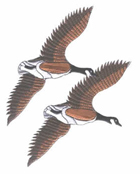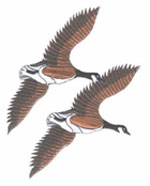Colonel Sir David Stirling, OBE, DSO, was born, 15th November 1915, and died on the 4th November 1990, in a London care home aged 75.
Archibald David Stirling was born at the ancestral family home of Keir House,three miles south east of Doune, in Perthshire, Scotland. His father was Brigadier General Archibald Stirling of Keir and his mother was Margaret Fraser, who in turn was a daughter of Lord Lovat. Stirling was educated at Ampleforth College in Yorkshire and Trinity College, Cambridge.
Stirling was travelling along the Rio Grande when World War II broke out. Having entered Canada via New York in late 1938, his plan was to work his way across this continent and then climb all the worthwhile Rockies finishing of with a horse ride along the length of the continental divide. At the outbreak of hostilities his mother asked him to come home, and by the cheapest possible means. David did return, but, by the most expensive means, flying back to Britain, first class, ever the flamboyant big spender!! Having been absent from the Scots Guards Supplementary Reserve since early 1938, he returned to the colours and attended Pirbright. The young Subaltern described by the Guards Depot as an ‘irresponsible and unremarkable soldier’, was preparing to go with the ‘Snowballers’ to Finland as part of the Scots Guards 5th Battalion Expeditionary Force, but this mission was cancelled and the battalion disbanded and Stirling at a loss as to what to do with himself. Finding himself back at Pirbright, that most unloved place, for Stirling anyway! In June 1940 he volunteered for the newly-formed No.8 Commando under Lt. Col. Robert Laycock, which in early 1941 formed part of a group called Layforce trying to stem the advance of the German Afrika Corps in North Africa. Layforce was disbanded on 1 August 1941, leaving a frustrated Stirling convinced that there was an unrealised opportunity for a small, highly motivated and mobile force to cause considerable damage to the enemy.
Not one to see his ideas lost in an in-tray somewhere in the Army chain of command, Stirling decided to go straight to the top. Despite being on crutches following an accident during parachute training, he went to the Middle East headquarters in Cairo determined to see the Commander-in-Chief, General Claude Auchinleck. After a cat and mouse chase through the MEHQ buildings by Military Police who had spotted him sneaking in, as his fist attempt failed due to no ID being produced. He ended up in the office of the British Deputy Commander in the Middle East, General Ritchie, who listened to Stirling's ideas, then conveyed them to Auchinleck. After much debate and investigation into the background of this man Stirling, his plan was eventually tentatively approved.
The result was the formation of a unit deliberately confusingly named. Brigadier Dudley Clarke, was in charge of all the deception operations in the Middle East. In a haphazard way the name was born. L detachment, The First Special Air Service Brigade, which did not exist. Stirling did not really care what name it had at this stage. Stirling wryly hinting that the ‘L’ meant Learner. Their first mission involved parachuting behind enemy lines in support of a more general attack in November 1941. It was a complete failure, with only 22 out of 62 troopers reaching the rendezvous. Stirling decided on a change of tactics. In subsequent operations, SAS troopers were carried to an insertion point some distance from their target by the Long Range Desert Group, a motorised reconnaissance unit, and they then attacked under cover of night on foot before being picked up once more by the LRDG, which the SAS nicknamed the ‘Libyan Desert Taxi Service’. Using this approach, Stirling organized attacks on the German airfields at Aqedabia, Sirte and Agheila, in which the SAS destroyed 62 enemy aircraft without a single casualty.
When, in early 1942, German and Italian security around likely targets was increased to stop these raids, Stirling decided to acquire a number of heavily armed jeeps to carry out attacks much more swiftly, giving the SAS more chance to evade or overwhelm enemy patrols. By July 1942 the SAS regiment had 15 highly modified jeeps in action in North Africa. His commander at the time, Field Marshal Montgomery, was quoted as saying: "The boy Stirling is quite mad, quite, quite mad. However, in a war there is often a place for mad people."
David Stirling, by now promoted to lieutenant colonel, was captured by the Italians in January 1943. He escaped four times before being sent by the Germans to Colditz Castle, where he was to spend the rest of the war. In the 15 months up to his capture, the SAS had destroyed over 250 enemy aircraft on the ground, plus hundred of vehicles, and a huge quantity of stored supplies. After David Stirling's capture, command of his 1st SAS Regiment passed to Lieutenant Colonel Paddy Mayne, while David's brother, Lieutenant Colonel William Stirling, set up the 2nd SAS Regiment in Algeria. At the end of the war Stirling was promoted to Colonel and made Deputy Commander of the SAS Brigade, where his role included tracking down members of the SS and Gestapo responsible for shooting Special Forces prisoners.
Afterwards, Stirling initially settled in Rhodesia, where he promoted the idea of the Capricorn Africa Society, a visionary scheme to unite Africa without regard to racial, political and religious divisions. He was also associated with instances of covert military action in the Middle East. It was at this time he was running Television International Enterprises (TIE) operating out the same offices as his security company Watchguard. Stirling came into the public view again in the UK in the aftermath of the 1974 miners' strike, when he set up a shadowy organisation called GB75, an organisation of apprehensive patriots who would help keep essential services running in the event of a general strike.
Sir David Stirling was knighted in 1990. He died the same year, and was buried at St Cumin's Church, on the shores of Loch Morar at Morar; he is buried alongside his sister Irene. In 2002 a statue of David Stirling was unveiled; it is located on the Hill of Row, near his ancestral home, looking towards the Perthshire hills and Mountains, which is a fitting tribute to a man who had an idea and nurtured that idea into a being.
Of David Stirling’s greatness there can be no doubt. As a leader, a man of action and a man of ideas, he left an enduring mark on the military thinking of his age.
© Copyright David Blair 2010



